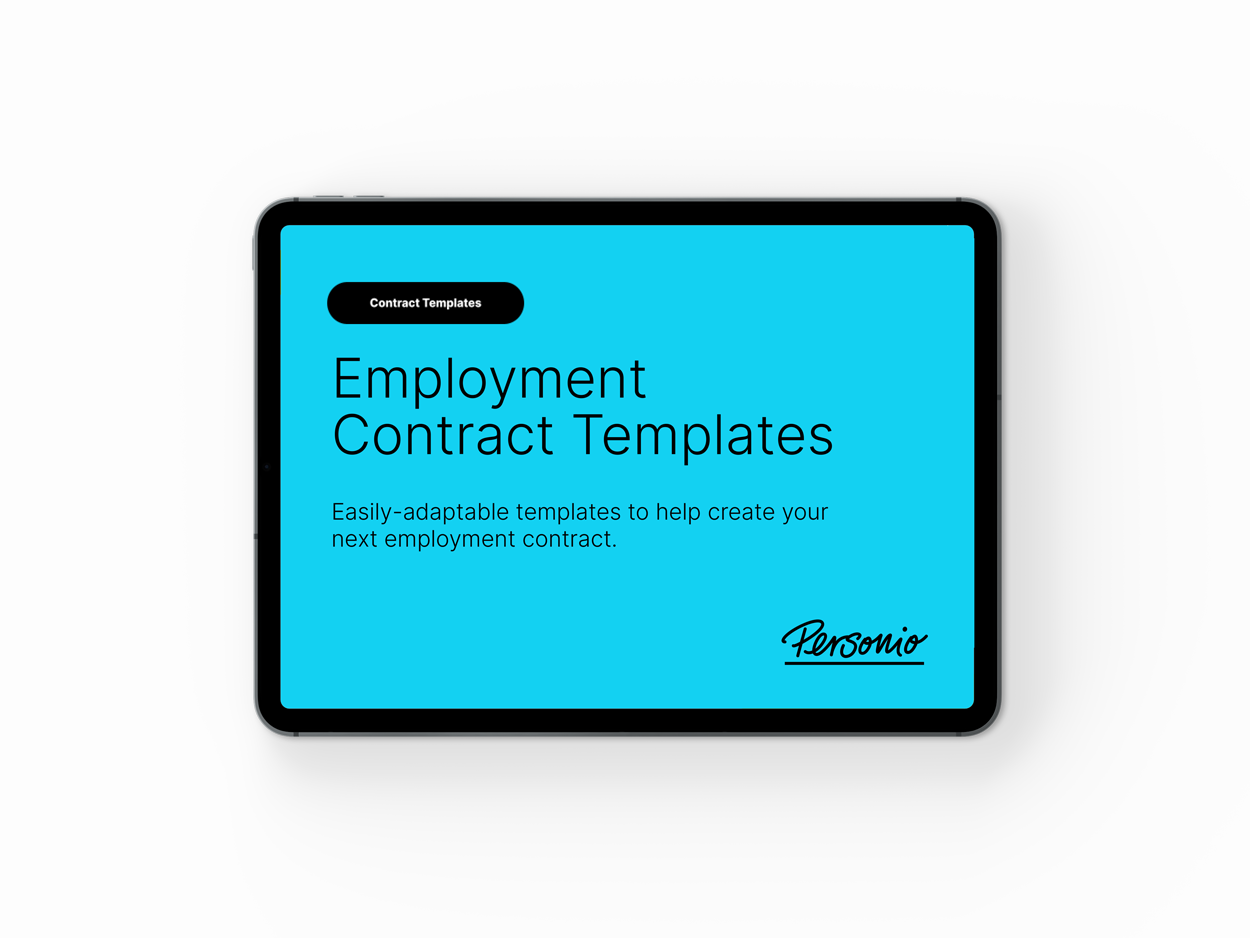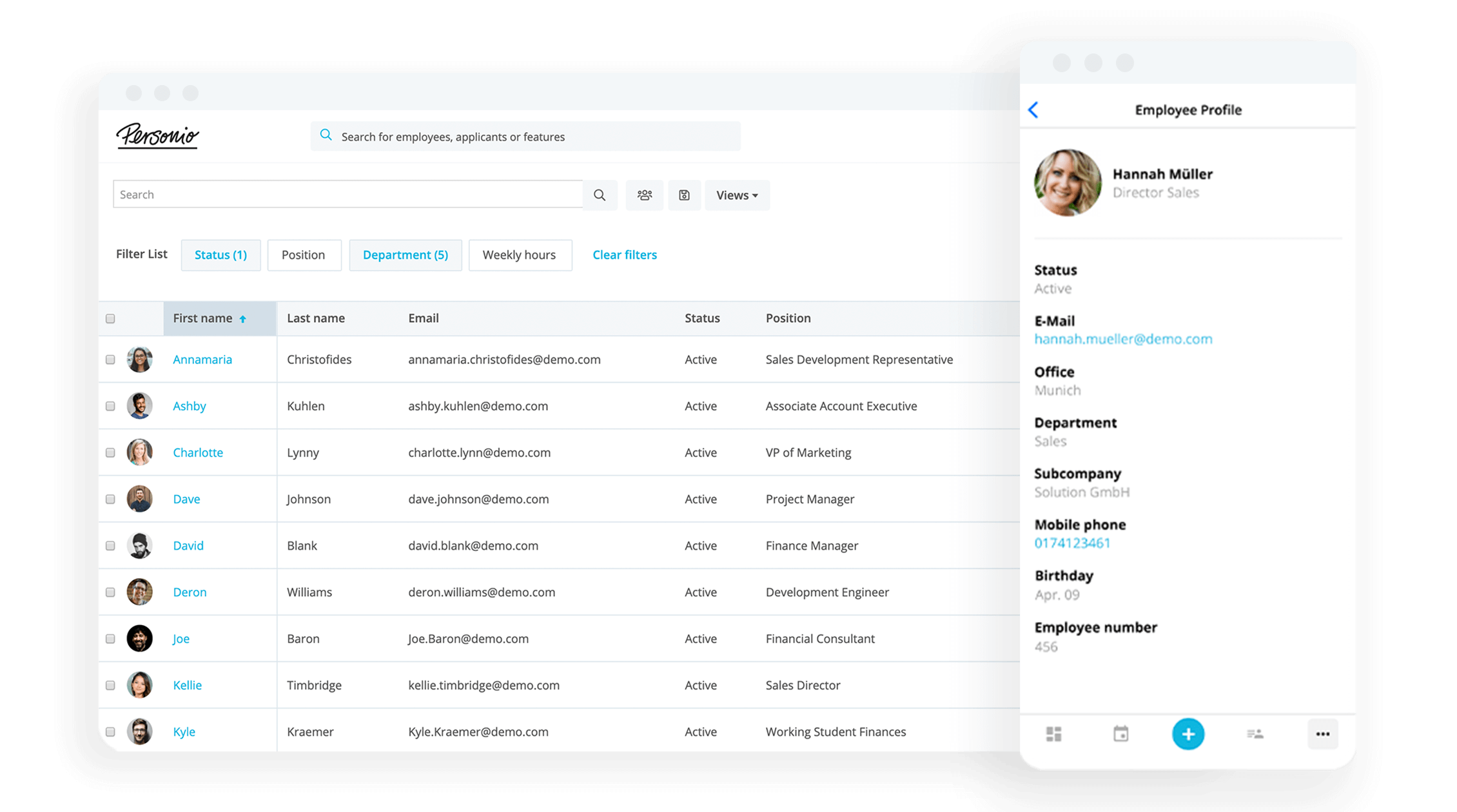Latest Blog Posts
The complete organisational guide to implementing compressed hours
Compressed hours has fast become an incredibly popular topic in the UK. Given the surge of the “Great Resignation” and quiet quitting, organisations have struggled to keep their employees and keep them engaged.
As the importance of remote work and work-life balance has risen for employees, compressed hours has emerged as one of the solutions to help support both. Similarly, the demand for more flexible work arrangements has increased, post-pandemic.
With that in mind, compressed hours might just be the solution. Let’s go over what compressed hours mean and how to implement them effectively…
Here's how to track and approve working hours from within Personio's HR software.Contents
- 1What are compressed hours?
- 2Benefits of compressed hours for employers and employees
- 3What is a compressed work schedule?
- 4How to implement a compressed work schedule
- 5Calculating compressed hours
- 6Compressed hours: Best practices for effective implementation
- 7Should your organisation employ compressed hours contracts?
- 8Are compressed hours the future of work?
What are compressed hours?
Compressed hours is a type of flexible work arrangement. It is where employees compress their 40-hour workweek from the more traditional five days to fewer days. A compressed working schedule most commonly involves working four days of the week.
There are multiple ways to approach compressed hours:
Employees can decide to work two extra hours from Monday to Thursday and then take off every Friday. This is popularly called the 4/10 (working four days for 10 hours) working schedule.
Employees can decide to work for 30-60 minutes additionally for four days and then take off half of the fifth day. Most employees prefer to do this Monday-Thursday and then take a half day on Friday.
Benefits of compressed hours for employers and employees
To best answer this question, we need to look at it from two different perspectives: the employee’s side and the employer’s side. Here's a quick overview:
Employer benefits: Increased productivity, employee retention and reduced burnout.
Employee benefits: Better work-life balance and time for personal development.
Challenges to consider: Potential bottlenecks and the importance of proper time management.
1. From the employer's side
From the employer’s side, compressed hours can be really useful when implemented in the correct way. Here's an overview:
Compressed hours can really help out employers retain their employees and provide better wellbeing to their employees.
When employees are taken care of, they can be more productive and effective, take fewer sick days and stay with the company for a longer period of time.
All of these are major positives for the employer.
When implemented poorly, though, compressed hours can be quite problematic. An essential employee who is involved in almost every single project in the company taking a day off every week might create a bottleneck.
Also, there are some roles like customer service which require people to be available to take in calls, so employers need to be careful when implementing compressed hours.
The last thing to note is time tracking. Employers will have to track an employees’ working hours efficiently if they want the compressed hours working schedule to succeed.
2. From the employee's side
Looking at the employee’s side, compressed hours can have multiple benefits like an additional weekend day (Friday off), more free time and the possibility to start a side-hustle or additional education.
However, there are also some problems that employees might face when performing in a compressed hours work schedule:
Handling a 10-hour day can be quite problematic for many employees. They may need to figure out how to effectively use their energy for such a long working day.
Doing more work in less days requires the employees to figure out how to be more productive and do everything that needs to be done so that projects don’t come to a standstill when they’re not there.
Download: Employment contract templates

We took the time to create some helpful, UK-specific employment contract templates to help your organisation sign your next great hire. Download them today for free.
Download them nowWhat is a compressed work schedule?
A compressed work schedule is a way for the employee to perform their 40 hours of work in a flexible way so that they can enjoy certain benefits. One way of implementing the compressed work schedule can also be rolling out a 9-day fortnight.
How to implement a compressed work schedule
Steps for employers:
To approve compressed work hours, employers should evaluate individual requests, assess workload and team dynamics, establish clear expectations and consider a trial period.
When determining suitability for different roles, consider the job nature, team structure and company culture.
Legal considerations include compliance with labor laws, collective bargaining agreements, employee privacy, and health and safety. By following these guidelines, employers can effectively implement compressed workweeks while maintaining productivity, employee satisfaction, and legal compliance.
Steps for employees:
To propose compressed work hours, research company policies, assess suitability, prepare a proposal, approach your manager and be open to negotiation.
To effectively manage your time in a compressed schedule, prioritise tasks, set clear goals, use time blocking, minimise distractions, take breaks, delegate tasks, learn to say no and continuously improve your strategies. By following these tips, you can effectively manage your time and make the most of your compressed workweek.
Tools for success:
Make the process easy, efficient and seamless by using attendance tracking software for time tracking and compliance.
Calculating compressed hours
Compressed hours work schedule still requires employees to do 40 hours of work per week. It’s just that they’re determining how many hours they’ll do per day (as we saw in the above examples).
With compressed hours, you need to take care of holiday leave. An employee who is working on compressed hours calculates their annual leave in hours instead of days.
Take into account that when your employees working days fall on bank holidays, they don’t deduct one day from their annual leave, but the number of hours they would have done on that day.
For example, if the bank holiday falls on a Monday and the employee on compressed hours works 10 hours on Mondays, then the employee gets 10 hours deducted instead of one regular (eight-hour) day.
Compressed hours: Best practices for effective implementation
To make compressed hours successful, establish core hours, allow flexibility within those hours, plan shifts carefully, and use time tracking tools. Encourage open communication, regular meetings, and the use of task management tools.
Ensure clear communication, active listening, and a process for resolving conflicts. Consider remote work needs and provide necessary support. By following these tips, you can successfully implement compressed hours and reap the benefits.
To ensure effective time tracking in compressed hours, choose the right tool, set clear guidelines, review data regularly, and hold team members accountable.
To prevent work disruptions, maintain open communication, prioritise tasks, delegate when possible, use time management techniques, be flexible and adaptable, and have support systems in place. By following these best practices, you can effectively track your time, prevent disruptions, and ensure a successful transition to compressed hours.
Should your organisation employ compressed hours contracts?
Compressed hours provide a lot of flexibility for employees and employers get more productive employees who are less burned out. So compressed hours contracts provide a lot of benefits for both employees and employers, but they need to be implemented correctly if all stakeholders want to benefit from them.
Are compressed hours the future of work?
Compressed hours may be the future of work. But, it will truly depend on how well companies can organise themselves to track all the necessary elements to make it work. One of the biggest concerns is the ability to track time effectively.
Most companies struggle with this when implementing compressed hours, but if you start using attendance tracking software, you can accurately track time in a legally-compliant way.
Explore how Personio’s HR platform can help you manage your flexible work schedules. Book a demo today.

